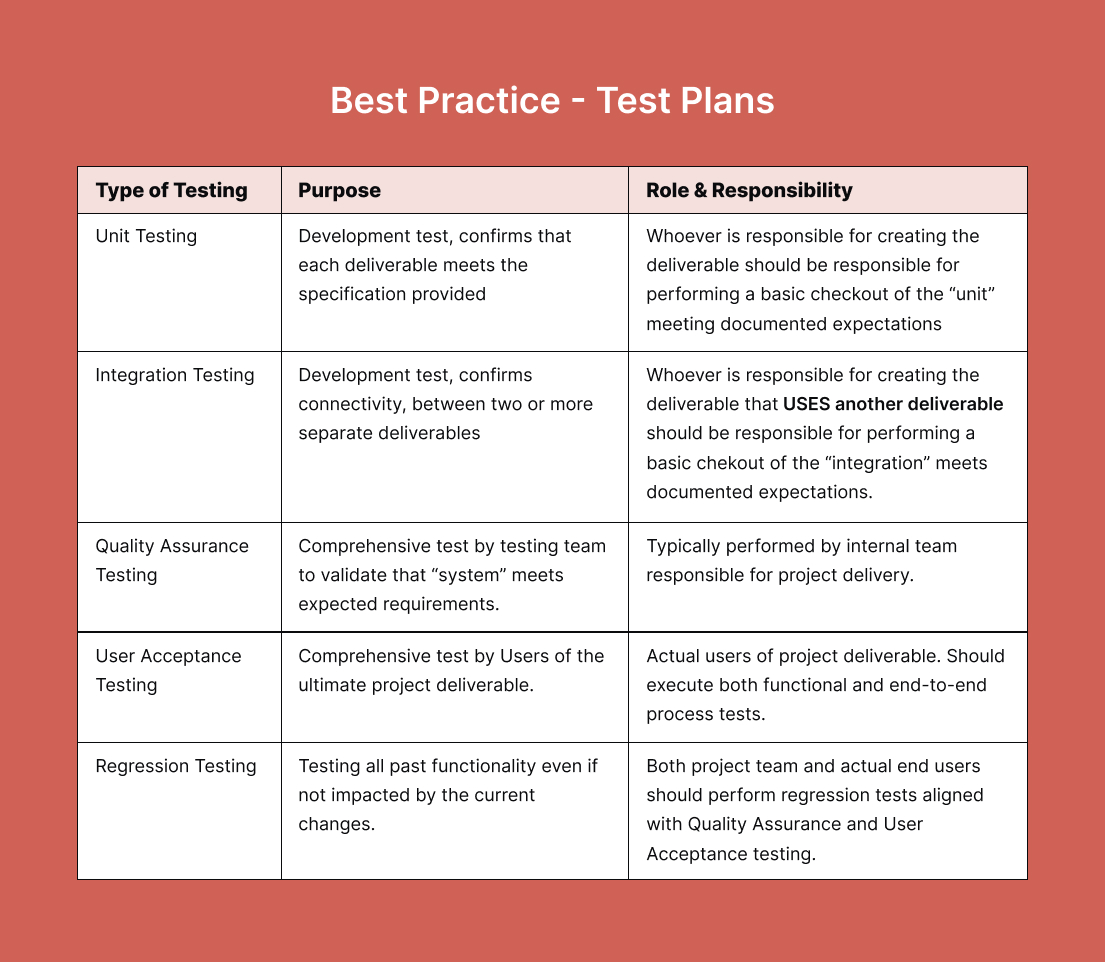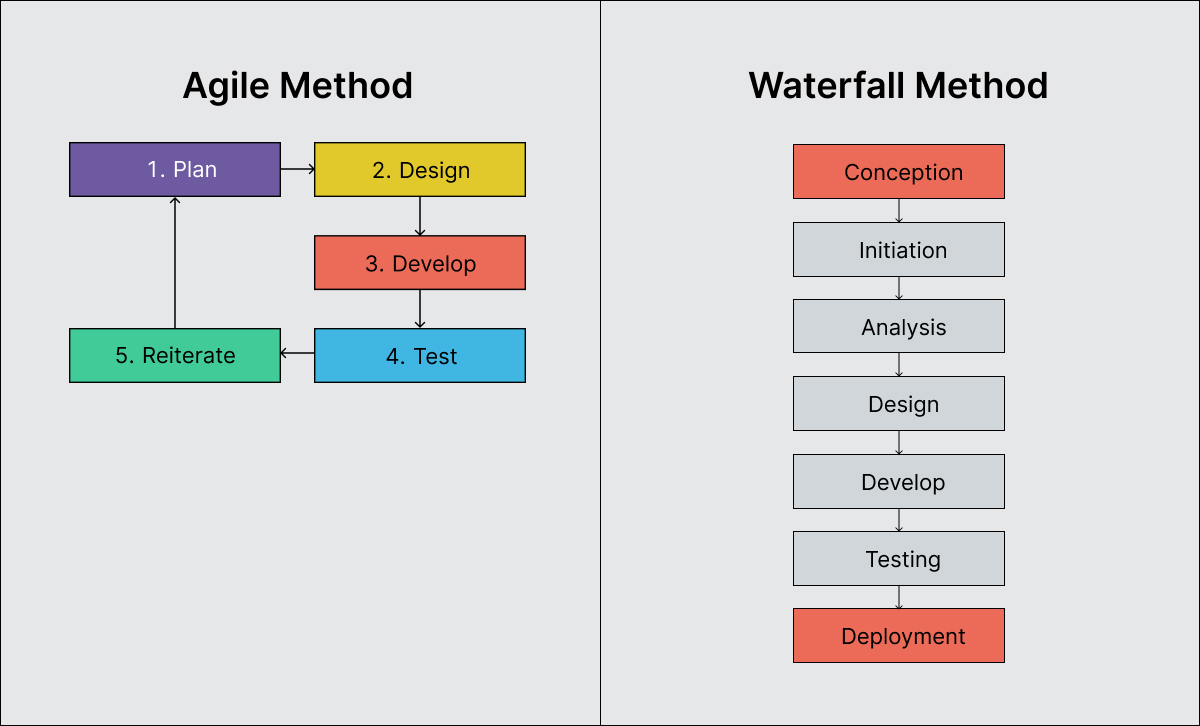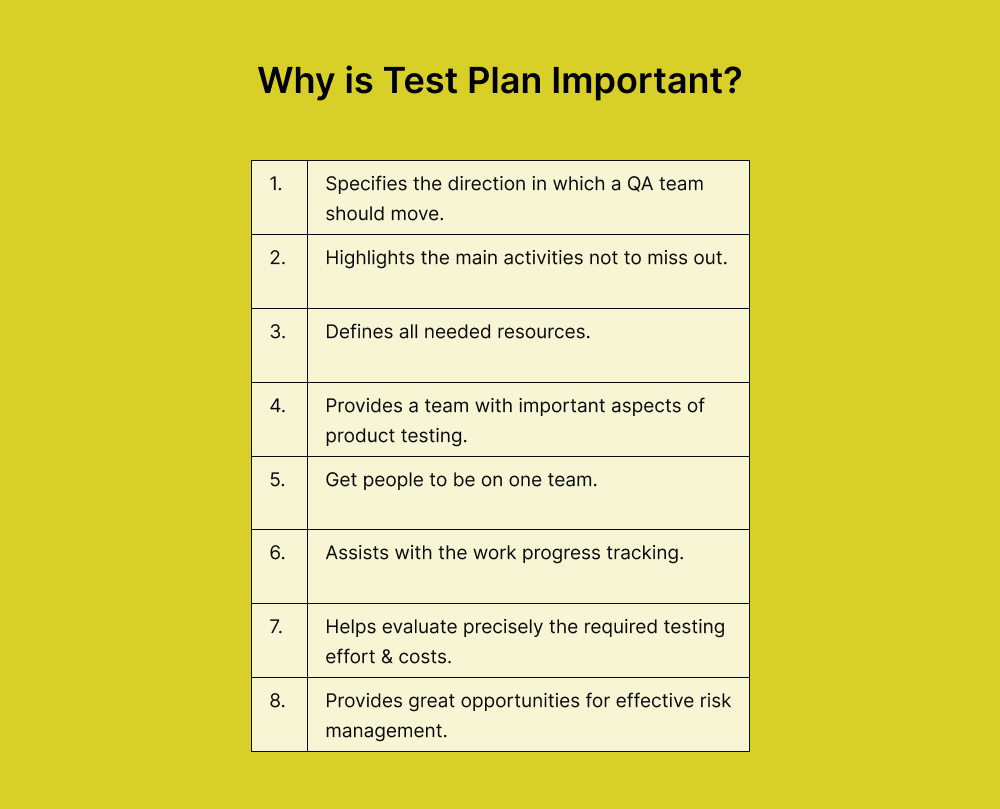Effective QA Test Planning: A Comprehensive Framework and Guide
Let's face it, Quality Assurance (QA) isn't easy. That's why we've compiled this framework and a handy plan template to help you get off the ground with your QA test planning. If you're just stepping into the world of QA, or if you've got a few questions about how to craft a solid test plan, you're in the right place. This article is all about making QA test planning approachable and straightforward, providing you with a framework that you can use as a starting point.
Podcast for product managers
We've produced a podcast all about global product growth. Listen to an episode below.
What is QA?
QA is the process of validating that a product meets quality standards. It ensures that the product has no defects or malfunctions by testing it against agreed-upon specifications. It also helps identify any issues with usability early on in the development cycle. This business process transforms a product from the conceptual to the market-ready stage.
Want to drive your global growth in local markets?
We can help you drive global growth, better accessibility and better product quality at every level.
What is a QA test plan?
A QA (Quality Assurance) plan is a document that outlines the steps to perform the necessary QA testing for your business. The plan is primarily intended for the project team. That might include the QA team members, project managers, developers, testers, and any other stakeholders. It aims to establish a common understanding of the QA approach and ensures everyone is aligned with the objectives. It wants to get to the necessary details of the budget, scope, time requirements, and activities required to achieve its goals, but it should not tire out the reader.
Foundations of QA test planning
Quality Assurance (QA) Test Planning is an integral part of the Software Development Lifecycle (SDLC), profoundly influencing the quality and reliability of the final product. Understanding the role of QA in various stages of the SDLC and the types of testing involved, as well as the differing approaches in Agile and Waterfall models, is essential for effective test planning.
Understanding the Software Development Lifecycle (SDLC)
The SDLC comprises several phases: requirement gathering and analysis, design, implementation or coding, testing, deployment, and maintenance. QA has an important role throughout these stages:
- Requirement analysis: QA teams ensure that requirements are feasible and testable.
- Design: They review designs to identify potential issues early in development.
Implementation: During this phase, QA prepares test environments and test cases. - Testing: This is the primary phase for QA, involving the execution of test cases and bug identification.
- Deployment: QA conducts final checks and validations before the product goes live.
- Maintenance: Post-deployment, QA continues to monitor the software for issues that may arise in the operational environment.

Types of testing
A comprehensive QA Test Plan includes various types of testing to cover different aspects of the software:
- Unit Testing: Validates the smallest parts of an application, like functions or methods.
- Integration Testing: Focuses on the interfaces and interactions between integrated units/modules.
- System Testing: Involves testing the complete and integrated software to ensure compliance with the specified requirements.
- Acceptance Testing: Conducted to determine whether the system satisfies the business requirements and is acceptable for delivery.

Test planning in Agile vs Waterfall models
The approach to QA test planning significantly differs between Agile and Waterfall methodologies:
- Waterfall model: Here, testing is a distinct phase that follows after the completion of the development phase. Test plans are often detailed and finalized before the testing phase begins, following a linear and sequential approach.
- Agile model: Unlike Waterfall, Agile integrates testing throughout development. Test plans in Agile are flexible and evolve as the project progresses. Testing is conducted iteratively alongside development, allowing for continuous feedback and adjustment.

Why do you need a framework for QA test planning?
What happens if you don't do QA? A test plan will help identify potential problems early on, which saves time and money in the long run. Testing your product is preventative maintenance that ensures you launch a high-quality product and don't end up with tons of costly bugs.
When creating a test plan, think about what your company or product will be testing. You should also assign responsibilities and determine the necessary tools, scheduling tips, software, people, and processes to make the test plan effective.
How to create the perfect QA test plan
Developing a comprehensive QA Test Plan is a critical step in ensuring the successful delivery of a software product. This process involves several key activities vital in creating an effective and efficient test plan.
Step 1. Gather requirements
The first step in developing a QA Test Plan is to gather and analyze the following requirements:
- Understanding project documentation: It is important to thoroughly review all project documents, such as the requirements specification, design documents, and user manuals, to gain a comprehensive understanding of what the software is intended to accomplish.
- Stakeholder input: Engage with stakeholders, including developers, project managers, and end-users, to gain a comprehensive understanding of their expectations and needs. This collaboration ensures the test plan aligns with business goals and user requirements.
- Requirement traceability: Create a traceability matrix to link each requirement with its corresponding test case for tracking and ensuring test coverage of all requirements.
Step 2. Set test objectives
Clear test objectives guide the entire testing process. When setting these objectives, consider the following:
- Aligning with business goals: Ensure that the test objectives support the overall business goals and software objectives. This alignment guarantees that testing validates not only the technical aspects but also the business logic of the application.
- Defining success criteria: Establish specific, measurable, achievable, relevant, and time-bound (SMART) criteria for each test objective. This clarity helps in evaluating the success of the testing process.
- Scope of testing: Clearly define what is to be tested and what is not. This includes specifying features, functionalities, and parts of the application that require thorough testing.
Step 3. Allocate resources
Effective resource allocation is essential for the smooth execution of the test plan:
- Team composition: Determine the size and composition of the testing team. Assign roles and responsibilities based on skills and experience.
- Tools and technology: Identify and procure necessary testing tools, whether for manual testing, automated testing, or both. Ensure compatibility with the technology stack used in the development.
- Test environment: Set up a test environment that closely replicates the production environment (hardware, software, network configurations, and any other necessary infrastructure).
4. Risk assessment
It is imperative to identify any potential risks and prepare appropriate mitigation strategies to deal with them.
- Risk identification: Analyze the project to identify potential risks. These could be technical, such as complex functionalities, or non-technical, like tight deadlines.
- Impact analysis: Assess the potential impact of identified risks on the project and prioritize them based on severity.
- Mitigation strategies: Develop strategies like contingency plans, buffer times in schedules, and additional resource allocation to mitigate identified risks.
Key components of a QA test plan
Now, let’s go a bit more in detail about key elements of the QA test plan that ensure testing is comprehensive and covers all aspects in detail.
1. Test scope
The Test scope is a critical component that defines the boundaries of the testing effort. It outlines in detail:
- Features to be tested: This includes a list of all the features and functionalities that will be subject to testing. It specifies what aspects of the software are to be examined, including user interfaces, APIs, performance, security, and more.
- Features not to be tested: Equally important is identifying what will not be tested, either because it is outside the project's scope, deemed low risk, or due to resource constraints.
- Test coverage: The scope should also include the extent of test coverage expected, ensuring that all critical paths and functionalities are thoroughly tested.
2. Test strategy and approach
The Test strategy and approach segment outlines the overarching methodology and tools to be used in the testing process:
- Methodology: Specify whether the testing will be manual, automated, or combined. Describe the overall approach, such as black box, white box, or grey box testing.
- Tools and technologies: List the tools and technologies used for testing, including any specific software for bug tracking, test case management, or automation frameworks.
- Types of testing: Detail the various types of testing that will be conducted, such as unit testing, integration testing, system testing, and user acceptance testing.
3. Test schedule
The Test schedule is essential for project management, detailing the timeline for the testing activities:
- Milestones and deadlines: Outline key milestones and deadlines, including each testing phase's start and end dates.
- Resource allocation: Include a schedule for resource allocation, specifying when and where different resources, such as personnel and testing environments, will be needed.
4. Entry and Exit criteria
Entry and exit criteria provide clear guidelines on when testing should start and when it can be concluded:
- Entry criteria: Define the conditions that must be met before testing can begin, for example, completion of a certain development phase, availability of the test environment, or approval of test cases.
- Exit criteria: Specify the conditions that determine when testing can be considered complete. This often includes achieving a certain level of test coverage, passing all critical test cases, and resolving major bugs.
Execution and management of the test plan
The execution and management of a QA Test Plan are as crucial as its development. Effective implementation, diligent monitoring and control, and comprehensive reporting and documentation are key to the success of the testing process.
1. Implementing the plan
The first step in the execution phase is to implement the test plan:
- Team briefing: Ensure the testing team fully understands the scope, objectives, and procedures outlined in the test plan. A well-informed team can execute tests more effectively and efficiently.
- Setting up the environment: Prepare and verify the test environment according to the specifications in the test plan, including setting up necessary hardware, software, network configurations, and data setups.
- Executing test cases: Begin the testing process by executing the test cases as per the schedule. Pay attention to the test cases that cover critical functionalities of the software.
- Adapting to changes: Be prepared to adapt the testing approach if unexpected changes or challenges arise during the execution phase.
2. Monitoring and control
Continuous monitoring and control are vital for keeping the testing process on track:
- Tracking progress: Regularly monitor the progress against the test schedule, including tracking test cases and milestones completion.
- Quality control: Continuously evaluate the quality of the testing effort and the software being tested. This involves assessing the severity and frequency of defects found.
- Adjustments and updates: Make necessary adjustments to the test plan and strategy based on the feedback and results obtained during the testing process.
3. Reporting and documentation
Accurate reporting and documentation are essential for transparency and future reference:
- Test reports: Prepare detailed test reports that include information on executed test cases, defects found, severity of issues, and test coverage.
- Documentation of findings: Document all findings and issues in a structured manner. It can include logging bugs in a tracking system and keeping records of test case execution.
- Review meetings: Conduct regular review meetings with stakeholders to discuss test progress, findings, and any roadblocks. This way, everyone is aligned and informed about the testing status.
What separates a good from a bad test plan?
A QA test plan is designed to outline the testing approach, objectives, scope, and strategies for a specific project or product. In our experience, a good QA test plan exhibits the following qualities:
- Clear and comprehensive: A good test plan clearly defines the testing objectives, scope, and methodologies. It covers all relevant aspects of testing, including test types, levels, and environments.
- Realistic and feasible: A good test plan sets achievable goals and considers resource constraints. It provides a realistic timeline, accurately estimates effort, and aligns with the project's schedule.
- Well-structured and organized: A good test plan is well-structured and easy to navigate. It follows a logical flow, with clear sections and subheadings, allowing readers to locate specific information quickly.
- Detailed and specific: A good test plan provides detailed information about the testing approach, including the techniques, tools, and metrics to be used. It specifies test deliverables, test data requirements, and the responsibilities of the test team members.
- Flexible and adaptable: A good test plan acknowledges that changes may occur during the project lifecycle. It includes a change control process and is adaptable to accommodate modifications without compromising the overall testing objectives.

On the other hand, a lousy test plan may exhibit the following shortcomings:
- Lack of clarity: A bad test plan may be ambiguous, lacking clear objectives, scope, or testing methodologies. It can lead to misunderstandings and misaligned expectations among project stakeholders.
- Inadequate detail: If it lacks crucial information, such as specific test scenarios, test environment descriptions, or test data requirements, it can result in inefficient testing efforts and missed defects.
- Unrealistic timelines: A too tight or lenient timeline can lead to rushed testing or unnecessary delays in project delivery.
- Poor organization: If your plan is too complex for readers to find relevant information or understand the testing approach, it can lead to confusion and hinder effective communication among team members.
Conclusion
Addressing the hurdles in QA testing not only eases the workload of QA professionals but also smoothens the entire software development journey, enhancing productivity. By streamlining QA tasks, we ensure that the products not only align with business goals but also perform flawlessly, playing a significant role in the broader success of the organization.
Remember, testing is more than just a phase in the development cycle – it's a continuous commitment to maintaining the software's reliability, functionality, and security. Get in touch with the experts at Global App Testing for collaborative success. Contact us to learn more about our testing services and how we can help your application meet all the quality benchmarks.
FAQ
How does a QA Test Planning Framework differ in Agile and Waterfall methodologies?
In Agile, the framework is more flexible and iterative, with testing integrated into each development phase. In Waterfall, testing is more linear and occurs after the development phase.
What role does risk assessment play in a QA Test Planning Framework?
Risk assessment identifies potential issues that could impact the quality or timeline of the software development. It helps in prioritizing tests and allocating resources effectively.
How detailed should a QA test plan be?
The level of detail depends on the complexity of the project. However, a good test plan should be comprehensive enough to cover all necessary aspects while remaining adaptable to changes.
Can a QA Test Planning Framework be reused for different projects?
Yes, a well-developed framework can be adapted and reused for different projects, with adjustments made for specific requirements.
Keep learning
10 Software testing trends you need to know
Web app testing - everything you need to know
The only software testing checklist you need

